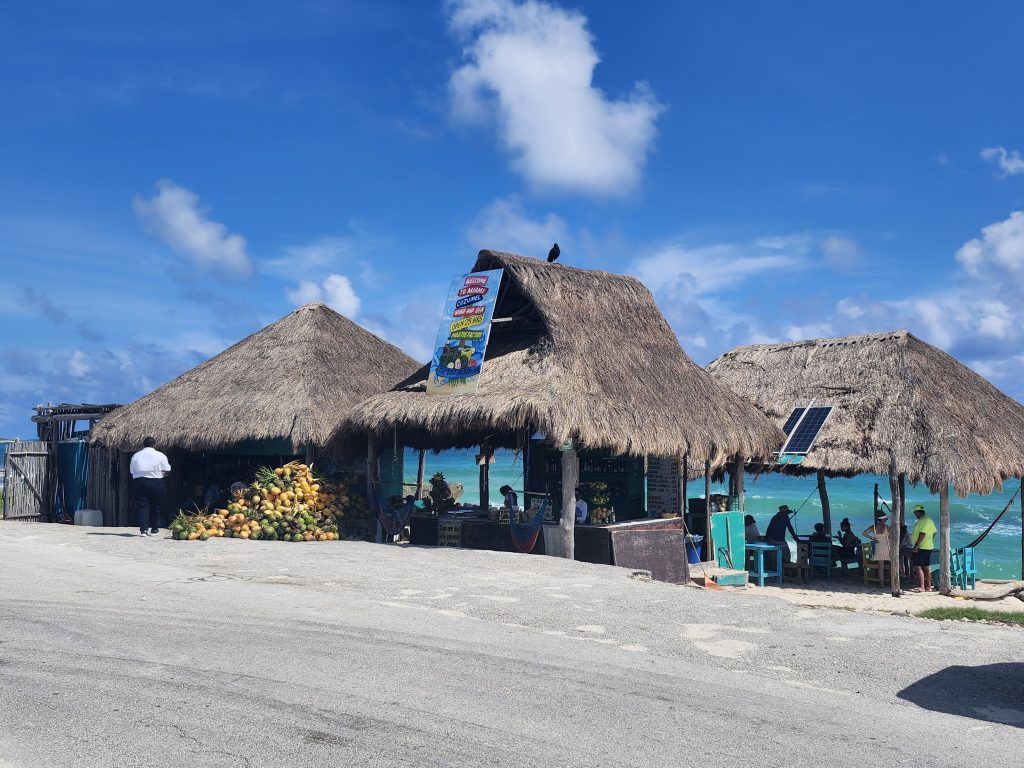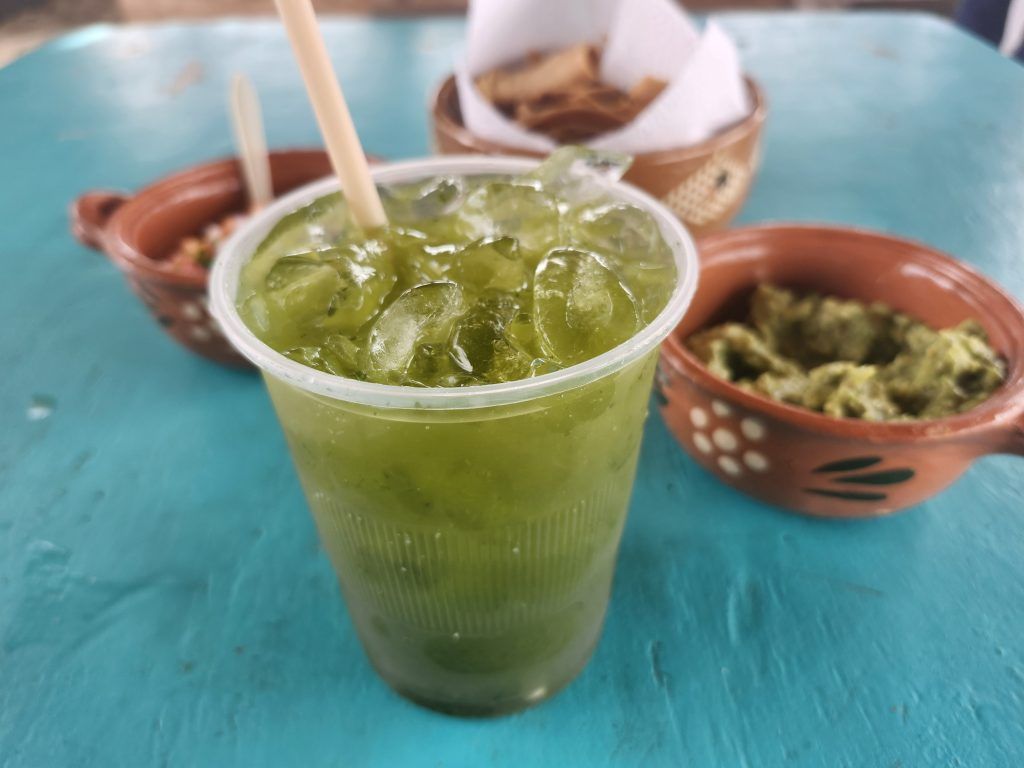When I wanted to slow down on my traveling for a bit I decided to plant myself in Playa del Carmen for five months (sandwiched around a six week trip to the US). Why Playa? It’s in the US time zones (especially nice during the Olympics and American football season). While it’s definitely not even remotely the most beautiful city in Mexico it is, for me, very liveable. Most everything is walking distance from the center of town. It has the world class diving of Cozumel a short ferry ride away. It’s got the basic hot, tropical climate I mostly like. It has the standup paddleboard club I’m a member of, so I can get some nice water time on the beautiful Carribean. Finally, it has an incredibly vibrant expat community of Americans, Canadians, Europeans and South Americans with a diverse series of events most nights.
The iconic Portal Maya on the beachfront of Playa.
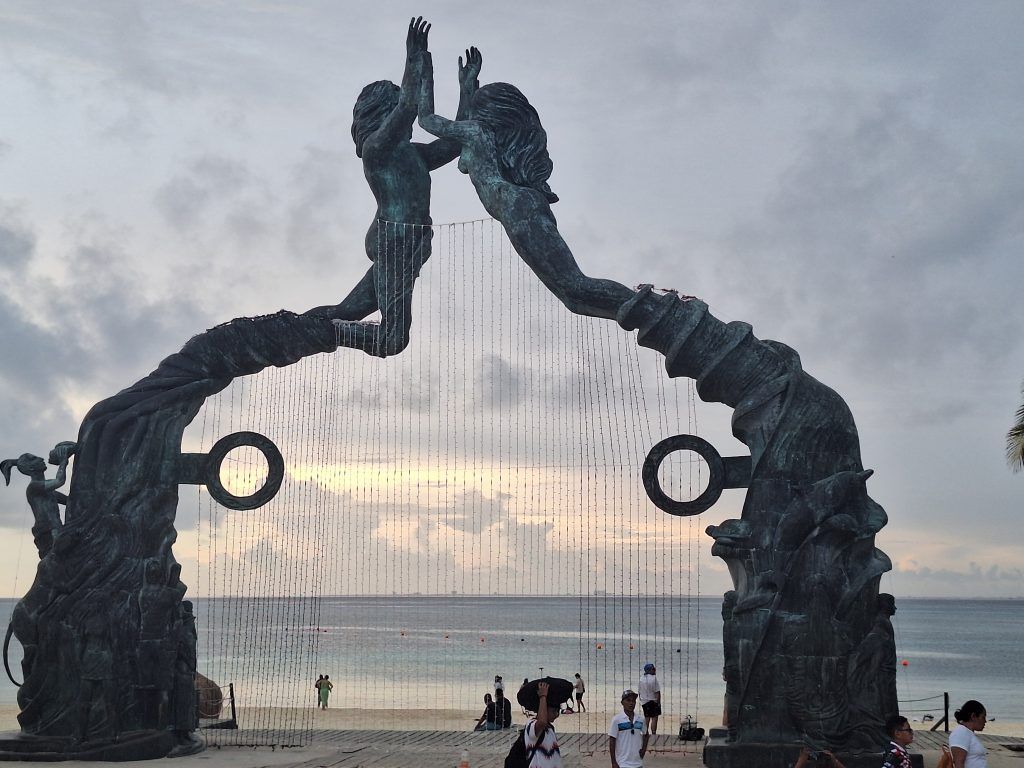
Looking south towards the beachs of Playacar.

Looking north to the southern beachs of Playa. The one thing you’ll notice is how small the sand areas are. Beach erosion is a real issue here.

Hurricane Beryl
I arrived in Playa del Carmen on June 15, just in time to experience my fourth hurricane in Mexico (as well as a few more near misses). As of Sunday, June 30, Beryl had formed into the earliest category 5 hurricane on record in the mid-Atlantic. It was projected to take a direct path to just south of Playa del Carmen.

A few days later we were more directly in its crosshairs as a possible category 3 hurricane.

It was scheduled to hit early the morning of Friday, July 5. That Thursday morning you’d have no idea that a hurricane was on its way.

Walking around town that Thursday evening you could see some of the preparations in place.

At around 7pm the first wisps of the storm were making their way in.

When I got woken up by the really strong winds around 5am it was just about to make landfall just south of here in Tulum. Thankfully it was down to a category 2 hurricane and it was moving fast. That meant we were not expecting it to be too bad in our area. It’s the slow moving hurricanes that cause the most damage.
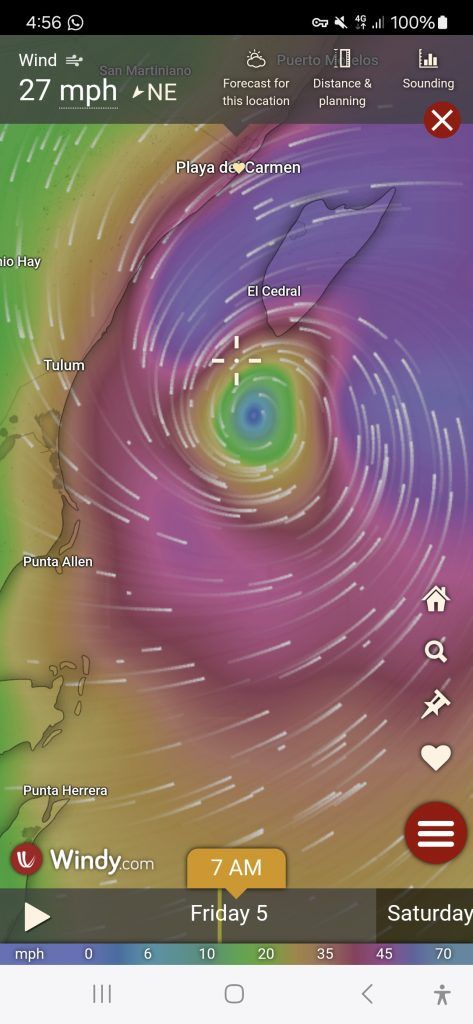
At first I didn’t think there was going to be much of an issue. The I realized a big part of my living room floor was flooded. I found I had a major leak in the ceiling. So I put a bucket under the leak and stopped any additional flooding. You can hear the heavy winds in the background and the power had just gone out. I was using my headlamp for the light.
The funny thing was, I was on the 2nd floor and the rooftop pool area was on the 5th floor. The 3rd and 4th floors got much worse damage than my apartment did.
Here’s the storm around 6:30am just after the sunrise. The wind had gone down a lot by then but was still pretty strong.
Around 7:30am I used a squeegee to push all the water out to the balcony. Below is what was left. By around noon it was all dried out. The power went out around 5:30am and came back on around 3:30pm, which wasn’t too bad as hurricanes go.

Thankfully, that was the last storm for a few weeks. Some huge sand storms from the Sahara come out over the Atlantic most years. This year was these were larger than normal and they inhibited hurricane development through the middle of August. So for a number of weeks, all we saw was this.

The one good thing about stormy weather is there can some surf generated from nearby bad weather. This picture was taken a couple of months after Beryl when a more moderate storm passed by.
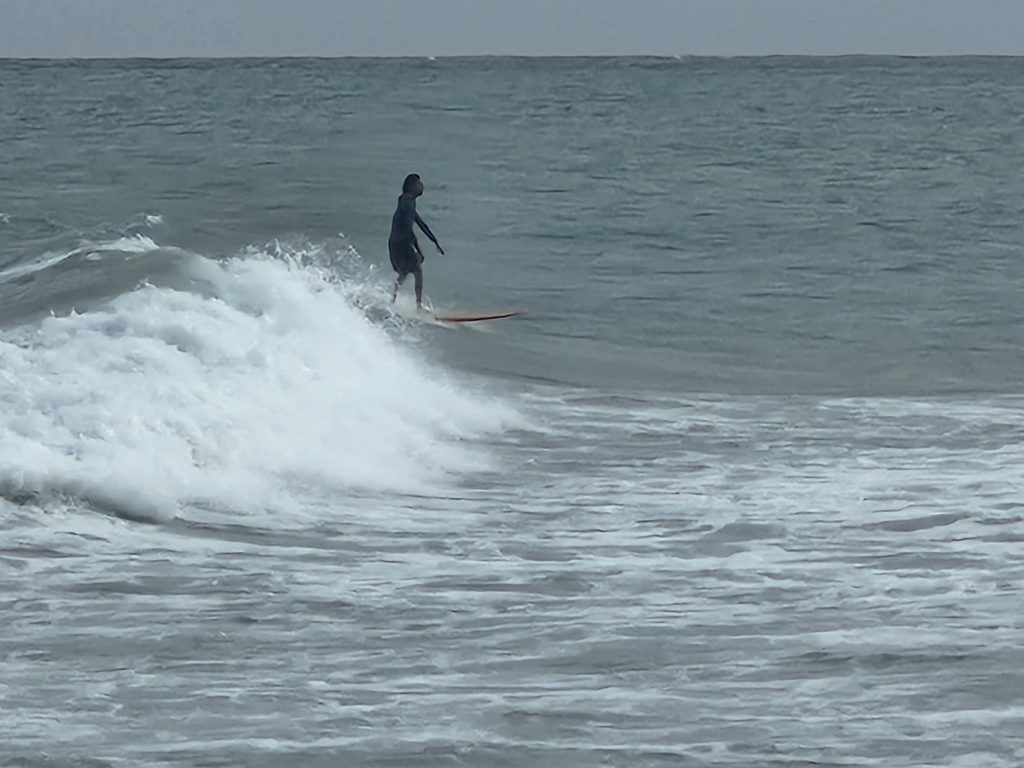
Playa Street Art
Most Mexican cities have beautiful and extensive wall murals. Per Wikipedia: “Mexican muralism refers to the art project initially funded by the Mexican government in the immediate wake of the Mexican Revolution (1910–1920) to depict visions of Mexico’s past, present, and future, transforming the walls of many public buildings into didactic scenes designed to reshape Mexicans’ understanding of the nation’s history. The murals, large artworks painted onto the walls themselves had social, political, and historical messages.”
Playa del Carmen is no exception to this.
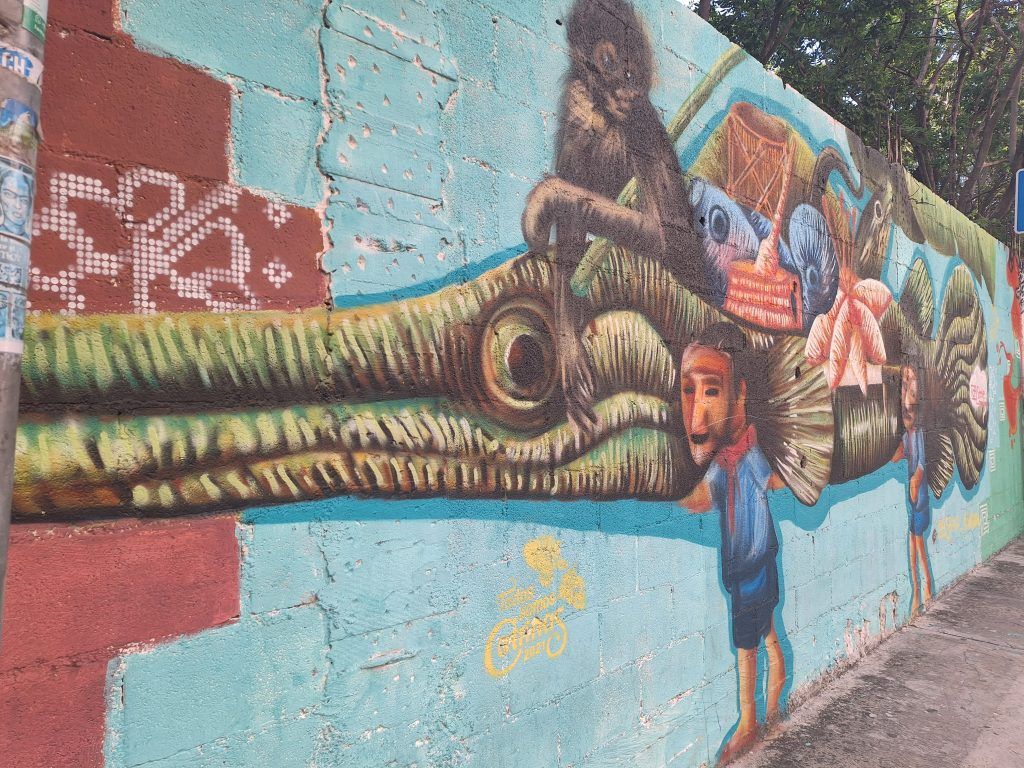
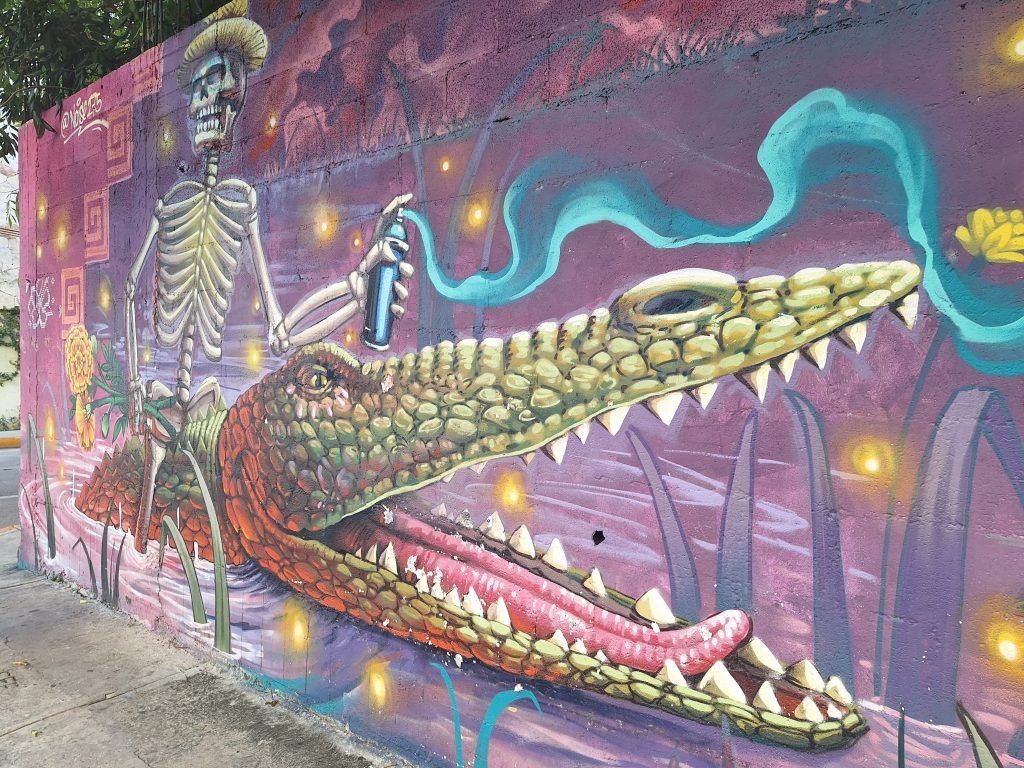
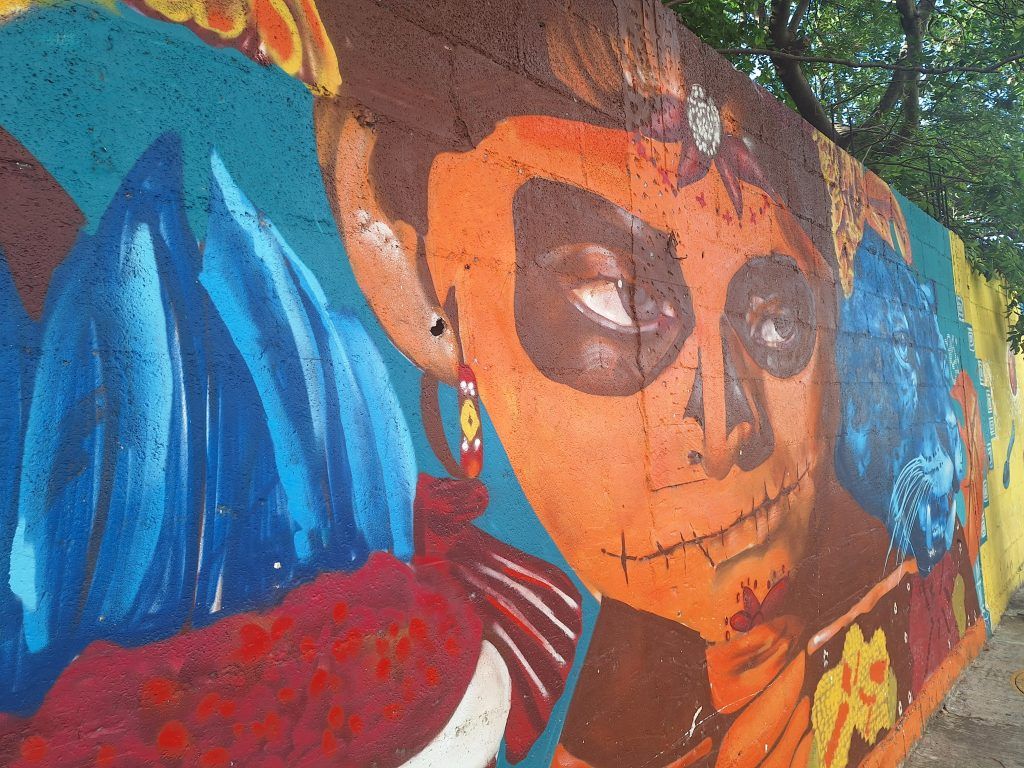
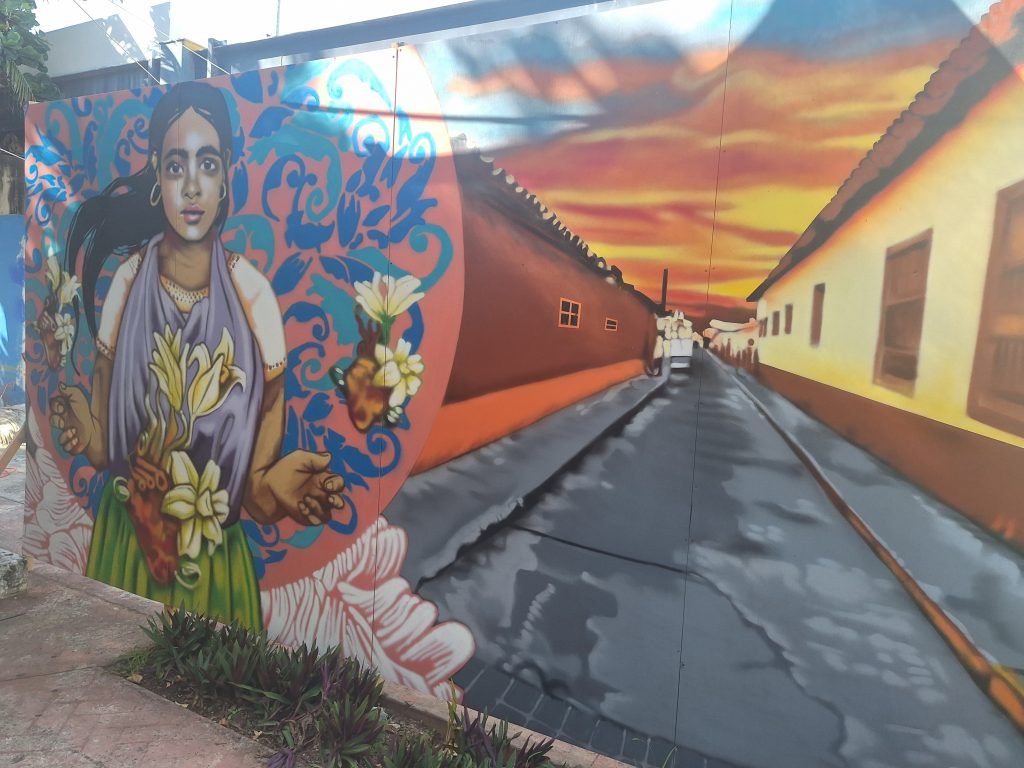
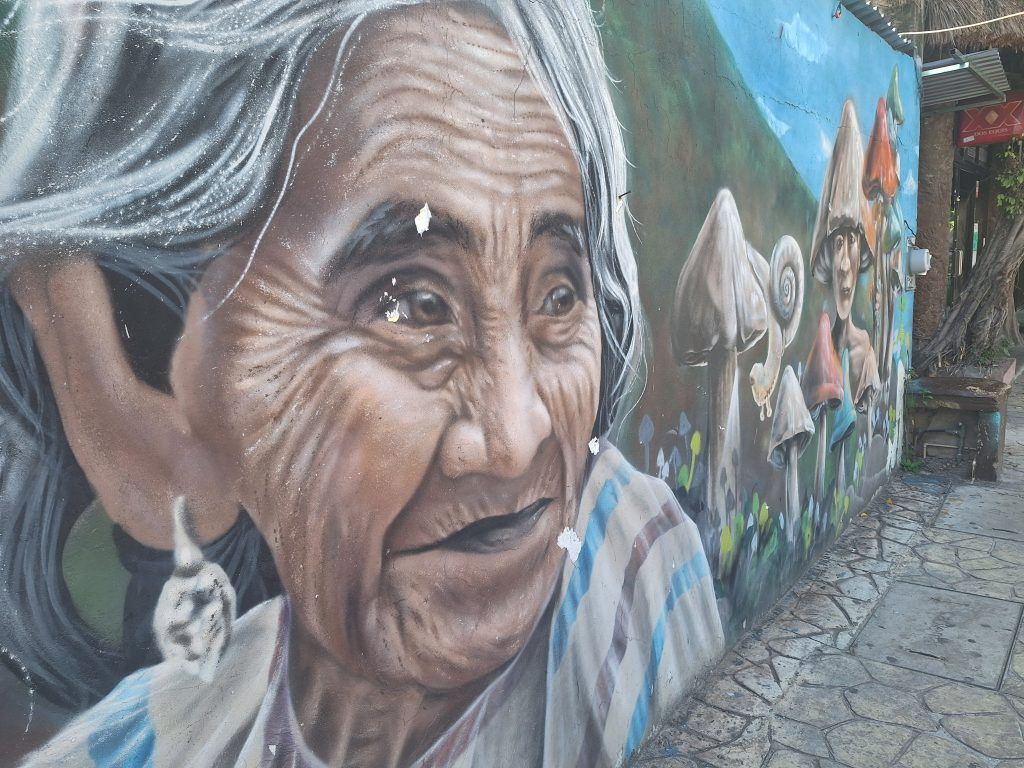
Dias De Los Muertes
The multi-day Mexican holiday called Dias De Los Muertes “…involves family and friends gathering to pay respects and remember friends and family members who have died. These celebrations can take a humorous tone, as celebrants remember amusing events and anecdotes about the departed. Traditions connected with the holiday include honoring the deceased using calaveras and marigold flowers known as cempazúchitl, building home altars called ofrendas with the favorite foods and beverages of the departed, and visiting graves with these items as gifts for the deceased. The celebration is not solely focused on the dead, as it is also common to give gifts to friends such as candy sugar skulls, to share traditional pan de muerto with family and friends, and to write light-hearted and often irreverent verses in the form of mock epitaphs dedicated to living friends and acquaintances, a literary form known as calaveras literarias. Mexican academics are divided on whether the festivity has genuine indigenous pre-Hispanic roots or whether it is a 20th-century rebranded version of a Spanish tradition developed during the presidency of Lázaro Cárdenas to encourage Mexican nationalism through an “Aztec” identity.”
The most impressive Dias De Los Muertes celebrations are in Oaxaca. Playa del Carmen is not a very traditional Mexican city and their celebrations are not very extensive. Nevertheless Playa’s main town square had multiple altars put together by various local organizations.




A small ghoul is being pushed around on the merry-go-round by her older brother.

Thanksgiving
An American friend organized a wonderful Thanksgiving dinner for over 30 people at an amazing local restaurant. There was turkey, cranberries, stuffing, sweet potaties, gravy and pecan and apple pie. It was a rally nice taste of home on a warm Mexican day.


Danza de Los Voladores
Coming back from the Cozumel ferry I happened to stumble upon this pole swing ceremony. It’s actually called The Danza de los Voladores (“Dance of the Flyers”), and [per Wikipedia] “…is an ancient Mesoamerican ceremony/ritual still performed today, albeit in modified form, in isolated pockets in Mexico. It is believed to have originated with the Nahua, Huastec and Otomi peoples in central Mexico, and then spread throughout most of Mesoamerica. The ritual consists of dance and the climbing of a 30-meter (98 ft 5 in) pole from which four of the five participants then launch themselves tied with ropes to descend to the ground. The fifth remains on top of the pole, dancing and playing a flute and drum. According to one myth, the ritual was created to ask the gods to end a severe drought.”
Cozumel Island
One of the main reasons to go to the island of Cozumel (which is about a 45 minute ferry ride from Playa del Carmen) is the world class diving around its large reef network.
Above water, Cozumel is also a beautiful island. Per Brittanica: “Cozumel was a commercial and ceremonial centre during the Mayan period (about 250 to 950 ce), and the island has several small archaeological sites. In 1518 Juan de Grijalva led the first Spanish expedition to Cozumel. In 1519 Hernán Cortés used the island as a base for Spanish efforts to conquer the Maya. During most of the Spanish colonial era, Cozumel was only sparsely populated, but trading ships and pirates occasionally sought shelter and replenished supplies on the island, which was protected behind offshore reefs.”
Renting a scooter and riding around the island is a beautiful way to spend a day.
Some parts of the road are shaded in lush forest growth.
The wide open southern part of the island has the most scenic views of the water.
The one small beach on the island.
And no ride around Cozumel is complete without stopping at the tiny Welcome to Miami Mojito Factory. It’s a small series of palapa roofed shacks right on the water. The mojito is made with exceptionally fresh mint leaves and is as good as any I’ve ever had.
